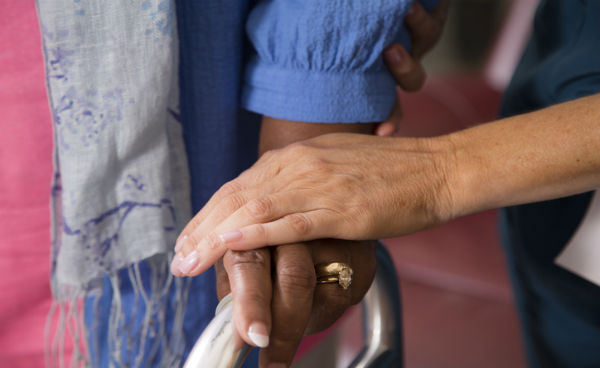 In the summer between my first and second year of medical school I worked on a series of written pieces while interning at Pulse, an online magazine of stories, poems, and art devoted to sharing the healthcare experience from all perspectives, created by healthcare professionals and patients alike.
In the summer between my first and second year of medical school I worked on a series of written pieces while interning at Pulse, an online magazine of stories, poems, and art devoted to sharing the healthcare experience from all perspectives, created by healthcare professionals and patients alike.
For this project, titled Encounters, I sat and spoke with patients about the moments that meant the most to them. The sessions lasted from five minutes to an hour and a half. Sometimes the patient needed prodding in the form of a question or two; most often I just listened.
As I transcribed those conversations, the patients’ words formed rich portraits of struggle and hope. What started as an offhand description of fruits or fish farms in a man’s home country would take on a deeper meaning as I transcribed it; a couple’s story about their tattoos became a testament to resilience in the face of chronic pain; a woman’s comments on her anticoagulants conveyed a distinct anxiety, causing her to take life slowly to avoid another heart attack.
Living with Pain and Disease
I’d also encounter harrowing accounts of life-threatening disease. One woman told me how getting hit in the chest with a baseball prompted a hospital visit that revealed a diagnosis of breast cancer. Another woman recounted how she had stayed with her partner for years after he gave her HIV because she felt guilty and scared of giving the disease to someone else.
I was frequently impressed by the emotion they could evoke with even the simplest language, which made my time with them fly by. One man described his anxiety as “an alarm going off” in his head. Another woman told me, “Life is everything. Other people die, don’t have nothing. But you live. You might be feeling that you have pain today, that you want to cry. But you live.”
It was fun, and weird, getting to know people so quickly. But in a sense, that is what doctors need to do on a daily basis: learn the complete medical and social history of their patients, prying for pertinent facts that might nudge them closer to a diagnosis.
On the other hand, my experience with Encounters was the complete opposite of what I do now as a third-year medical student. Then, I largely disregarded the name of the disease, delving instead into the individualized experience of the person dealing with it. Now I mine a patient’s life for clues relating to diseases I’ve read about.
The Importance of Stories on the Wards
It was an experience I was reminded of recently when I sat and spoke with one patient on the wards, Ms. H. She was crying because she’d realized that someone had opened and spilled the rest of her pills—medication that had cost her thousands of dollars out of pocket. That led to stories of her life, the losses she’d suffered, and how she’d been dealing with chronic joint pain for almost two decades before receiving the correct diagnosis and treatment. I held her hand as she sobbed, her voice breaking with the cadences of her stories.
It was the first time I’d felt tears in my eyes while talking to a patient.
Every once in a while, I’d think about glancing at the clock on the back wall of the room, wondering if I’d be penalized for staying so long with one patient or if my attending would dock my grade for my inability to take a focused interview. I hated having to think that way.
I was excited to talk about Ms. H. during rounds, hoping to capture the extent of her anxieties and her tortured medical and social history. But when we came to her, the team was eager to move on past her because her case was not life-threatening.
It was a deflating response.
Still, I think what I’ll carry most with me from my experiences with Pulse is the individuality of every disease experience. I understand the utility of labeling patients with diagnoses, but we can’t forget that the concept of disease goes further than matching a person with a diagnosis in a textbook.
For all the experience I accumulate with diagnoses that have been studied and researched for decades, my work with Pulse continues to remind me that I’m actually seeing new diseases and how they are being experienced every day. While working on Encounters, even when discussing the most mundane details with interviewees, I was never bored. Every new patient is a novelty, with a vast array of thoughts and stories brimming inside.

